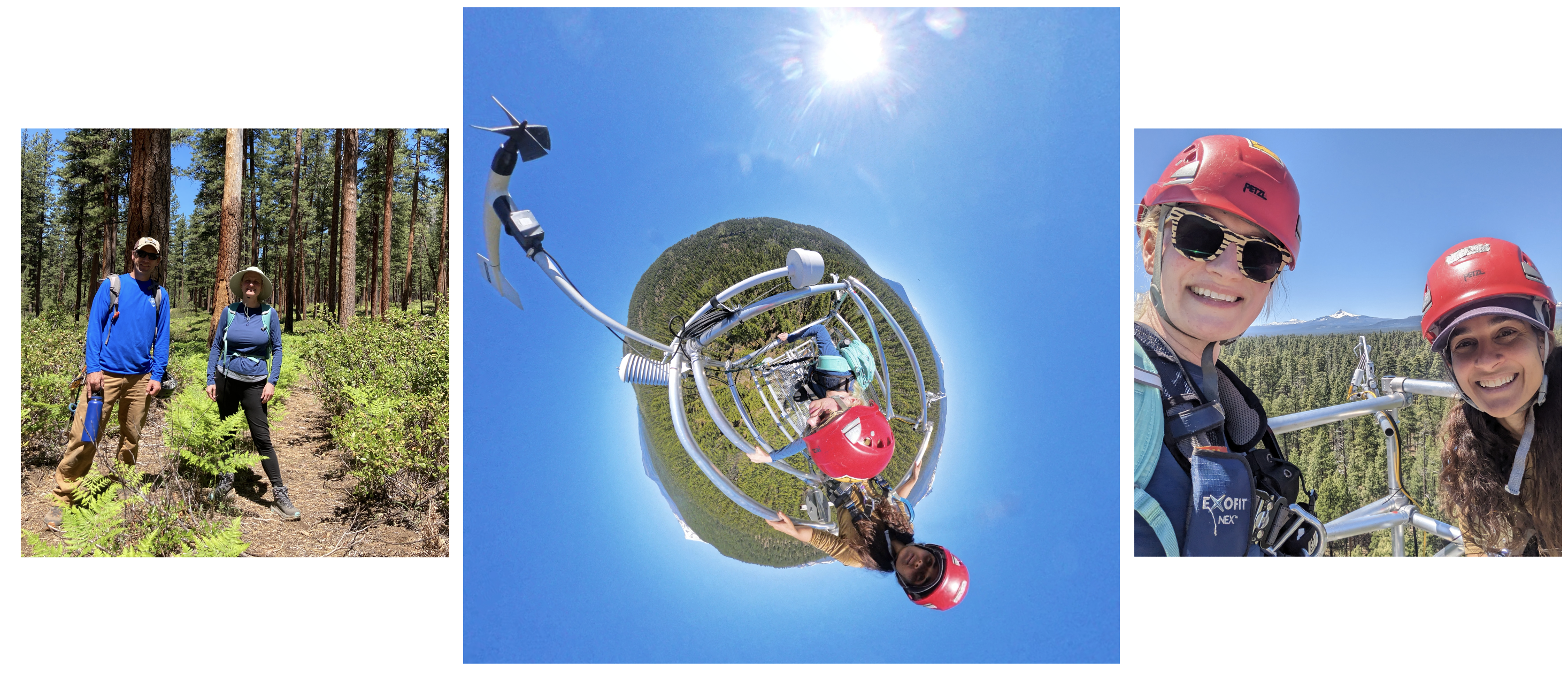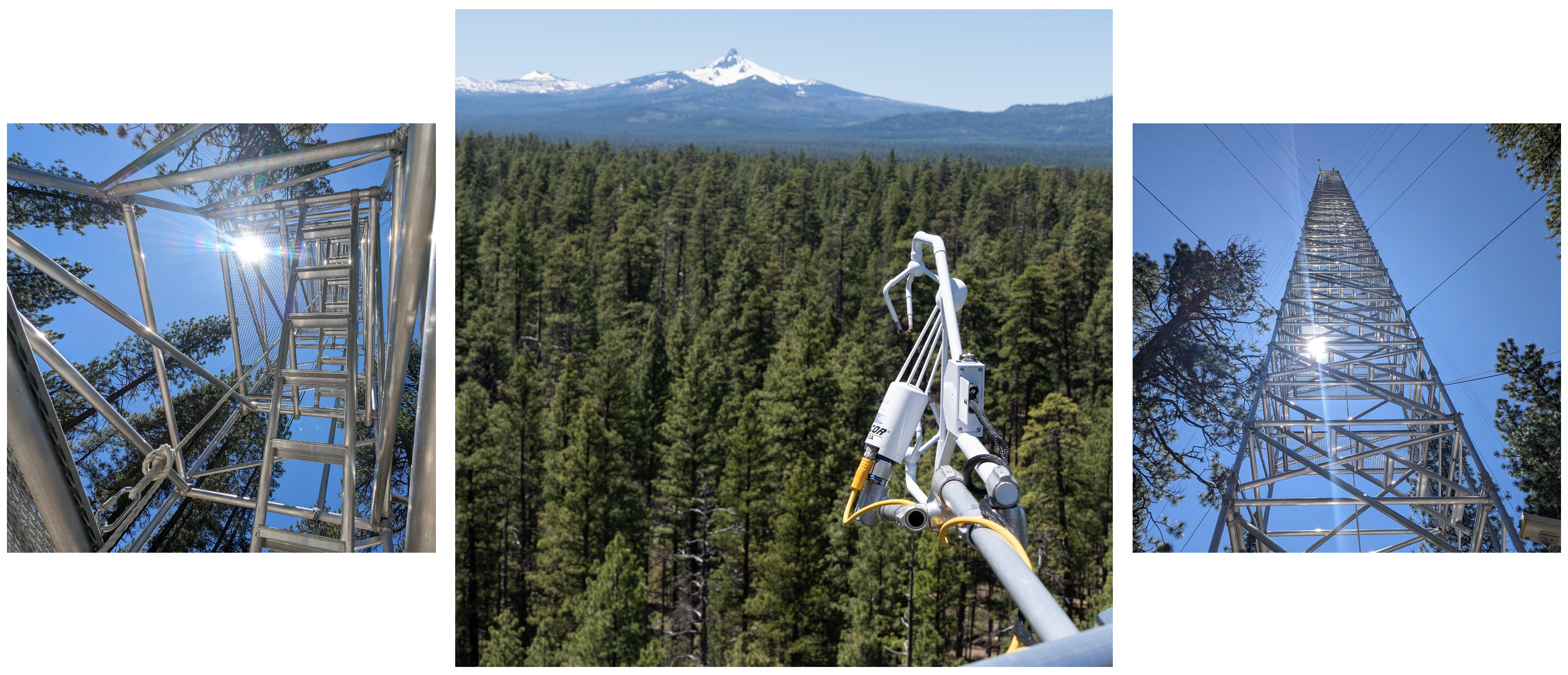In June 2024, artist Julia Oldham kicked off her residency by visiting and climbing the 180-foot US-Me4 tower situated in a dry ponderosa forest near Sisters in central Oregon. The US-Me4 tower is part of the AmeriFlux core site cluster in the Metolius, one of the primary research sites of Julia’s scientific collaborator Dr. Chris Still, Professor of Forest Ecosystems and Society at Oregon State University and PRAx L.L. Stewart Faculty Fellow.

“Ascending the tower took a little under 30 minutes, during which Maoya and I travelled from the warm, needle laden ground upward through the midstory and canopy of fragrant, mature ponderosas. We emerged above the tallest trees into the bright sunlight and blue, cloudless skies. This journey through forest growth gave me a sense of the enormous scale of these trees; I was awestruck by the time I reached the top. Maoya explained the functions of the sensors and devices on the tower, which helped to contextualize what I was starting to learn about the eddy covariance research being done in Chris’ lab. I filmed our ascent and descent with my 360-degree camera to attempt to capture some of the wonder I felt visiting these majestic trees at such a great height.” – Julia Oldham

Research in the Still lab focuses on the physiological responses of forests and grasslands to seasonal and interannual weather variation and ongoing climate change, along with resulting impacts of those changes on carbon and water cycling. This research is conducted at different space scales, from plants to ecosystems, and combines measurements with remote sensing and process modeling. A major effort of Still’s research group is running the Metolius site cluster. These sites span a range of forest ages and sizes as well as disturbance history from fire and logging and are located along on one of the steepest precipitation gradients in North America from the Cascade crest eastward to the Oregon high desert. Research at these sites includes eddy covariance-based measurement of carbon, water, and energy exchanges, as well as monitoring tree water fluxes using sap flow sensors, soil carbon fluxes using chambers, as well canopy temperature, structure and functioning with various imagers.
Julia is interested in using visual, lens-based data-gathering techniques to create artworks that offer a different perspective and an expansive visual examination of the FLUXNET research sites. Discover more of Julia’s work at juliaoldham.com and follow @juliaoldham on instagram.
